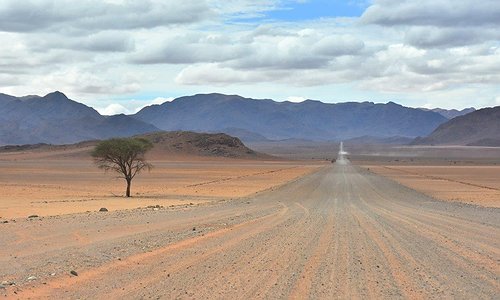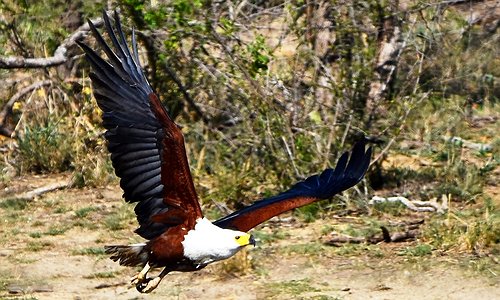Southern African border towns with big stories

Across the shifting sands, dry riverbeds, and lush frontier landscapes of southern Africa lie border towns whose very names whisper history, trade, politics, and intrigue. These places, often bypassed or underestimated, hold tales that reveal the heart of cross-border life, where cultures blend, and stories simmer beneath the surface.
From the sun-seared roads near Namibia's edge to Zimbabwe's tumultuous frontier posts, each town is a portal to something far richer than a customs stamp. Border towns in southern Africa are rarely glossy. They are transitional places, often raw with tension, negotiation and movement. But look closer, and they unfold stories of resilience, geopolitics and surprising vibrance. Along the frontiers of Namibia, Zimbabwe, Mozambique and Zambia, these towns embody more than lines on a map.
Southern African border towns are living chronicles of survival, trade, and transformation. Each carries the spirit of regional travel, the complexity of layered identities, and the pulse of movement. They are towns where road meets river, where languages mix, and where the journey becomes the destination.
Beitbridge, the pressure point of the north
If you’ve ever crossed the Limpopo River between Musina and Zimbabwe, you’ll know Beitbridge. The N1 leads you straight to it, unrolling from Johannesburg past baobab-dotted bushveld until the tarmac tightens into congestion and queues.
This is southern Africa’s busiest land border. Officially in Zimbabwe, Beitbridge also extends symbolically across the river into South Africa's customs facilities, creating a shared experience of frustration, commerce, and movement.
Beyond the logistics, the town is a place where informal traders thrive, taxi drivers navigate tense delays, and hotel owners host families split between nations. Its character is shaped by uncertainty, yet the people pulse with clarity of purpose.
Beitbridge, founded in 1929, has grown in fits and starts around the rhythms of migration and trade. It has also witnessed its fair share of hardship, from bottlenecks in infrastructure to waves of returnees during political flux. Yet there is a certain defiance in Beitbridge’s bustle. Its markets are packed with cross-border traders carrying wares from Gauteng to Harare. Minibus taxis honk past long-haul lorries as street vendors sell mopane worms, maize cobs and cell phone airtime with equal vigour.
Mutare: green valleys and smuggled goods
Nestled in the green hills of the Eastern Highlands of Zimbabwe, lies Mutare. This border town is Zimbabwe’s gateway to Mozambique. The A3 winds through misty mountains to the Forbes Border Post, where the terrain is as dramatic as the tales of cross-border smuggling.
The Mutare–Chimoio route has long been a corridor of contraband, but also of commerce and kin.
What makes Mutare compelling isn’t just its role in trade, but its distinct feel. Unlike drier border towns, it feels leafy and old-world, more like a misplaced European village than a frontier post.
The Bvumba Mountains rise nearby, shrouded in mist and mystery. In the town’s galleries and gardens, a quieter resistance to hardship can be felt, one rooted in art, tea estates, and stories passed down through generations.
Kazungula: where four nations almost meet
North of Kasane in Botswana, the Chobe River opens into a border puzzle. Kazungula, a sleepy town with a significant role, is where Botswana, Namibia, Zambia, and Zimbabwe flirt with a quadripoint.
Technically, the borders do not meet at one point, but within sight of each other. The opening of the Kazungula Bridge in 2021 redefined this node, shifting traffic away from ferry crossings and towards a smoother connection between Zambia and Botswana. Stretching 923 metres over the river’s wide breath, the bridge has stitched two nations together with more than steel. It links the North-South Corridor, facilitating trade from Durban to the Copperbelt and providing a key southern African overland route with new vitality.
Before the bridge, the ferry’s ponderous journey over the Zambezi defined the rhythm of cross-border life. Now, the new road infrastructure has quickened trade and transformed this quiet outpost into a key player in the North-South Corridor.
Kazungula remains essential to safari-goers heading into Chobe or Victoria Falls, but it also hums with ambition. Customs facilities gleam under the Kalahari sun, and regional logistics firms now see Kazungula as a more predictable route than Beitbridge.
Truckers roll through Kazungula by the hundreds, queuing for customs. But around the back roads, life unfolds in smaller ways. Fishermen cast nets in the soft orange dawn. Market stalls pulse with smoked bream and ‘kapenta’. Across the water, the Zambian border town of the same name mirrors its neighbour, connected not just by concrete but by kin.
Chirundu, a gateway to wild places
Head north into Zimbabwe, and Chirundu perches on the banks of the Zambezi like a sentinel between worlds. On one side lies Zambia’s Lower Zambezi National Park. On the other, Zimbabwe’s Mana Pools, a UNESCO World Heritage Site where elephant herds stroll across the riverine sands.
The Chirundu Bridge, with its art deco arches and newer adjacent structure, frames the daily theatre of cross-border exchange. Trucks groan under loads of copper, maize, and fuel. For travellers, this is the gateway to wild spaces teeming with life and shadowed by stories of ancient migration and colonial remapping.
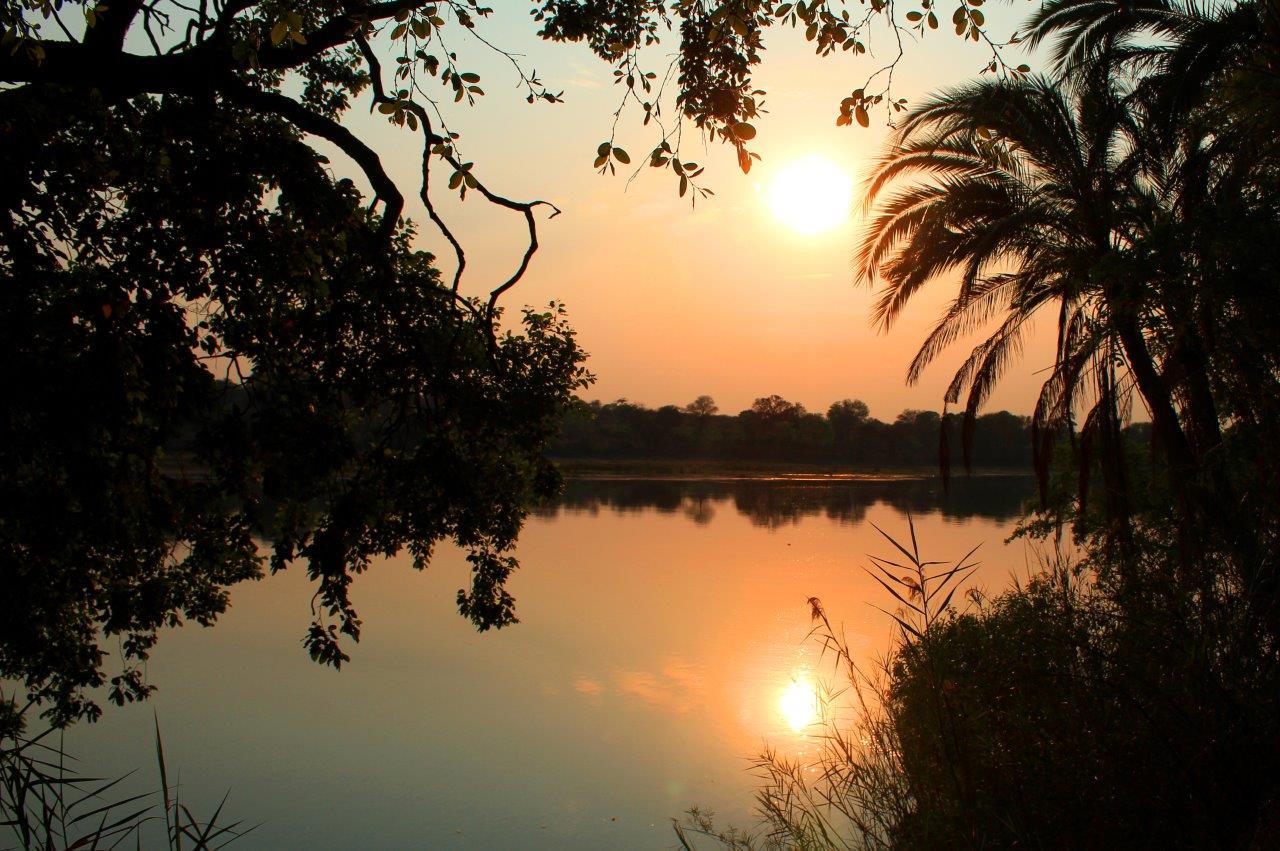
Rundu and the echoes of the Kavango
Set along the banks of the Kavango River, Rundu in northern Namibia faces Angola across the water. There’s no major highway crossing here, just a ferry and several sand tracks that turn to sludge in the rainy season.
Still, this border town matters deeply. Rundu is Namibia’s second-largest town by population, and while its colonial past lies quietly under the acacia trees, its present is vibrantly alive. Here, the Kavango River does more than divide nations. It links families, histories, languages. Oshiwambo and Rukwangali are spoken on both sides.
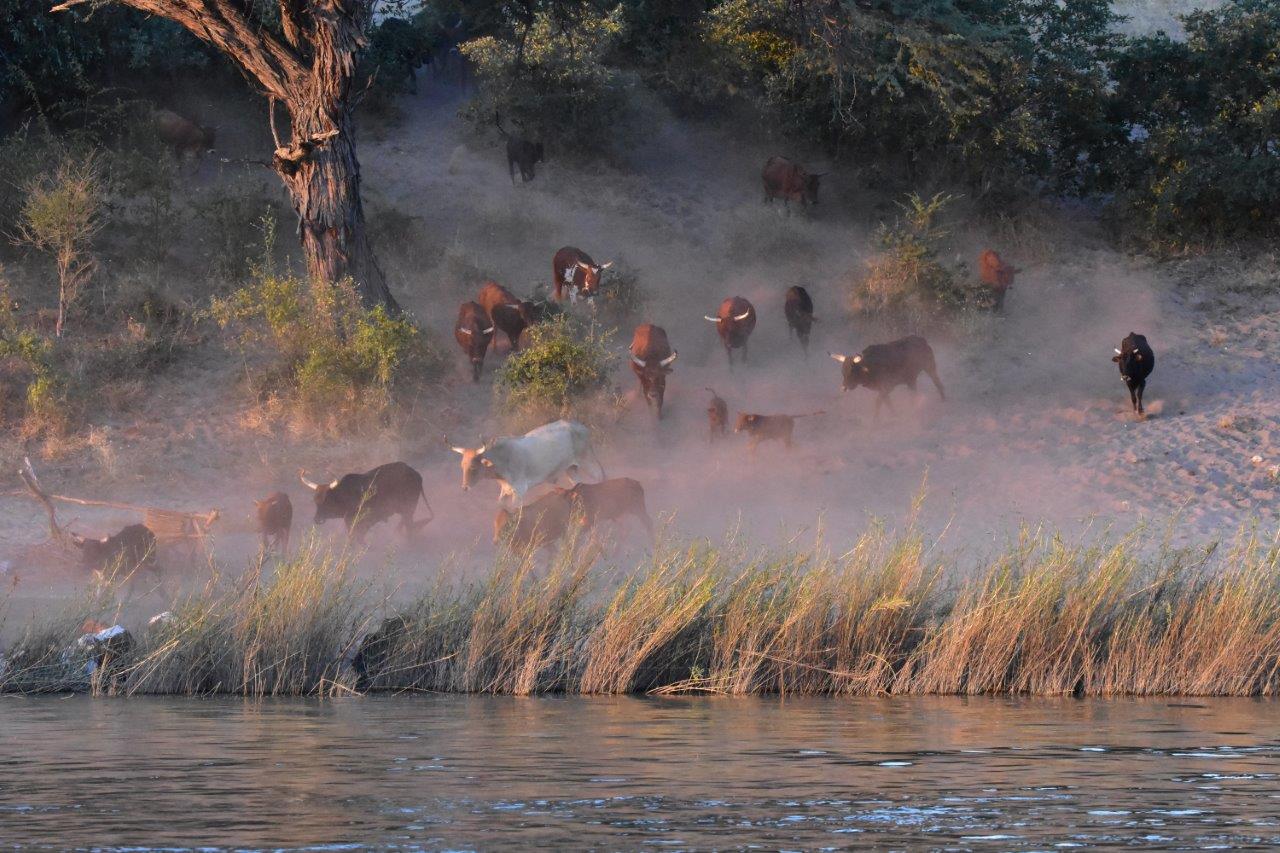
Traders move handmade goods, maize, and mangoes through local markets, often ignoring the formality of national borders.
Despite a lack of large-scale infrastructure, Rundu thrives as a centre of cultural continuity. It is a town built on relationships, not regulation.
Oshikango, a boomtown in the north
Where Namibia touches Angola’s Cunene Province sits Oshikango, a border town that swelled rapidly in the early 2000s. Located on the B1 highway north of Ondangwa, Oshikango is now a major cross-border trade hub, with shopping complexes, depots, and immigration offices that seem disproportionate to the sparse surrounding bush.
The town is symbolic of post-war commerce. After Angola’s long civil conflict ended in 2002, Oshikango transformed into a gateway for rebuilding. Namibian goods flowed north, while Angolan shoppers poured south. Today, it remains a strategic entry point, though the sparkle has dulled slightly with currency shifts and inflation. Still, Oshikango wears its past proudly, and its story is written in metal shop shutters and trilingual market stalls.
Oshikango stands as a hybrid world of cultures and currencies. It thrives on commerce, with warehouses, duty-free shops and fusion restaurants lining its streets. Trucks from Walvis Bay roll in with imports, while Angolan shoppers pour across the border looking for electronics and South African textiles. Portuguese echoes through the air as much as Oshiwambo, a testament to the layered identity of this busy town.
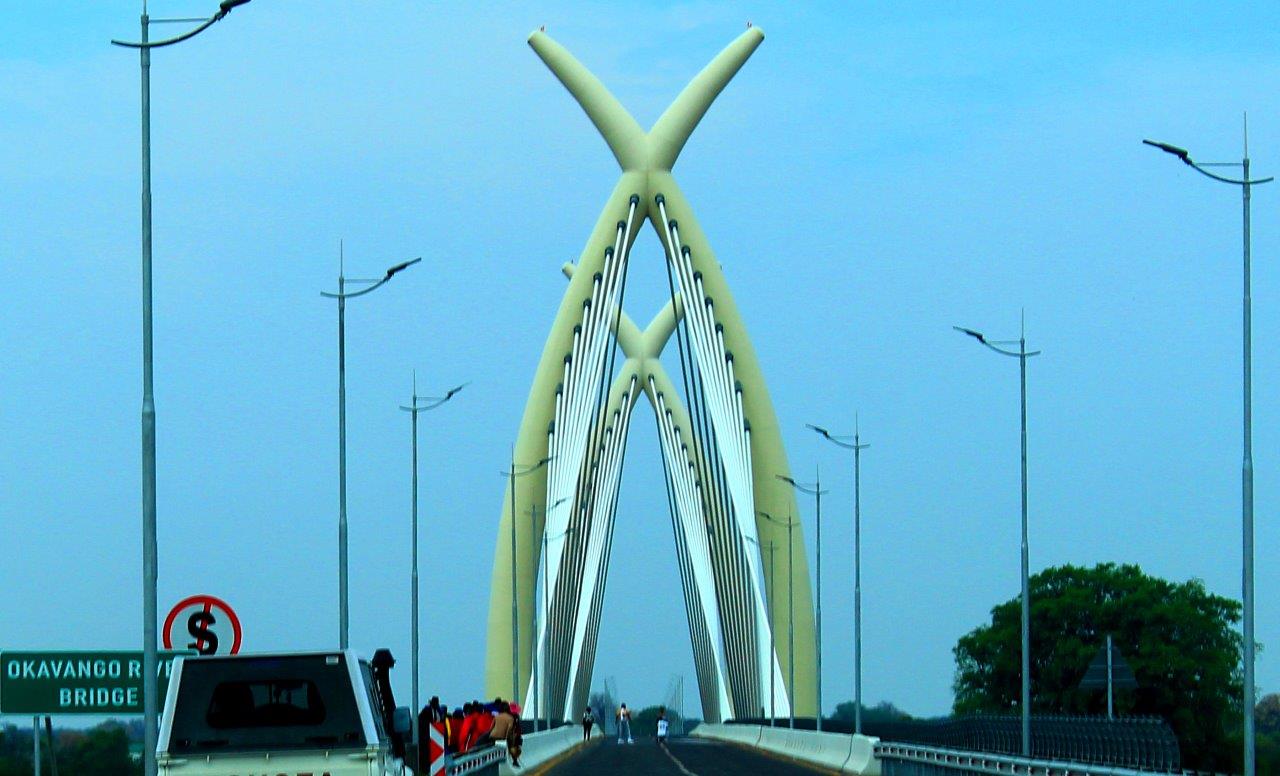
Mohembo, a lifeline for locals and travellers
At first glance, Mohembo appears more like a sleepy riverside outpost than a functioning international border. Nestled in the far north-western edge of Botswana, near the Okavango River, this crossing links Botswana with Namibia's Zambezi Region. Few travellers find themselves here by accident. To reach Mohembo, one must follow the A35 north through Shakawe, where the road flattens and the landscape transitions into scattered delta villages and mokoro-lined banks. It is a place where bureaucracy and biodiversity meet quietly under the sun.
The Mohembo border post, recently upgraded with a new bridge completed in 2022, now replaces the long-standing ferry that once dictated the rhythm of passage. The bridge is more than a convenience; it signifies Namibia and Botswana’s mutual intent to support trade and regional travel along this key southern African overland route. With the border open from 6:00 to 18:00, it serves a steady trickle of vehicles, most carrying goods, aid, or safari-bound tourists.
On the Namibian side, the village of Mohembo West lies just inside the Bwabwata National Park, a protected area where wildlife, people and conservation ideals co-exist in delicate balance. Here, border patrols sometimes share their commute with elephant herds and kudu. The Kavango River, dark and glassy, continues to feed not just the landscape but the layered cross-border relations shaped over generations.
Despite its modest appearance, Mohembo has strategic weight. It provides a shorter alternative for transporters travelling between Rundu and Maun, bypassing busier crossings further south. Yet the pace remains unhurried. Local vendors sell firewood, bream and sugarcane along the roadside. Children wave at passing cars with a mix of curiosity and expectation. This is travel at its most grounded – a border town that pulses with everyday resilience rather than spectacle.
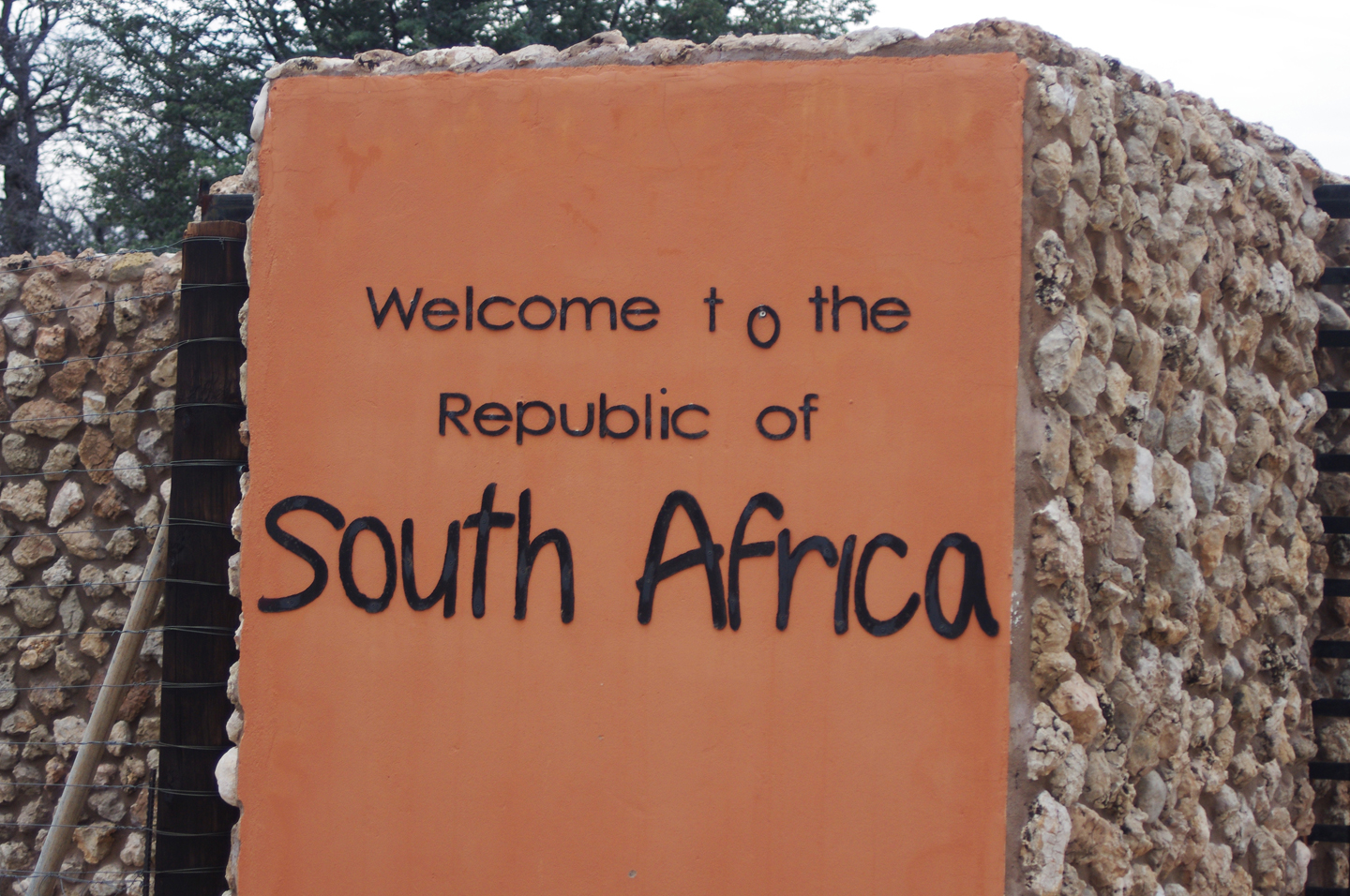
Photo: Mariana Balt.
Mata Mata, where wildlife enthusiasts cross
Far to the south, where the Kalahari bleeds into dune-streaked wilderness, lies Mata Mata, the other kind of border town – one built on silence and sun. Located within the Kgalagadi Transfrontier Park, Mata Mata is less a town than a transition zone. It straddles the border between Namibia’s southern Karas Region and South Africa’s Northern Cape, but only allows passage for those entering or exiting the park itself.
The border post is not for trade or trucks. Instead, it welcomes overlanders and wildlife enthusiasts making their way between Namibia and South Africa through one of southern Africa’s most remote conservation areas. On the Namibian side, travellers must pass through the tiny settlement of Koës and follow the D503 and C15 through rolling semi-arid grasslands to reach Mata Mata. The route is stunning and spare, with little in the way of fuel or human activity. Oryx and springbok are more common than pedestrians.
Arriving at Mata Mata, the sensation is one of near-total seclusion. A few chalets, a dusty reception hut and the occasional puff of wind are all that mark human presence. Yet it is precisely this absence that gives the place its power. Here, under endless sky, border bureaucracy recedes into the rhythm of the wild.
The Mata Mata crossing is also symbolically rich. It was among the first cooperative border points in the transfrontier park system, offering a model of how protected areas can be shared across countries. The crossing itself is efficient, requiring pre-booked accommodation in the park and paperwork on both ends, but often carried out with friendly simplicity.
Ramokgwebana, whispering of ancient routes
The road east out of Francistown, Botswana’s second-largest city, curves towards Ramokgwebana, a town that might barely catch the eye were it not for the border post it hosts. Here, the rhythmic beat of Botswana shifts into the clanging pulse of Zimbabwe.
Ramokgwebana’s gravel underbelly hides its past as a pivotal railway stop during the British colonial push inland. Today, the rusting remains of train tracks whisper of trade routes once alive with ambition.
Komatipoort, a junction of cultures and countries
Then there’s Komatipoort, tucked into South Africa’s northeast near the triple meeting point of Mozambique, Eswatini and South Africa. Just 8 km from the Lebombo border post, Komatipoort is a fusion of subtropical heat, sugarcane fields and transport arteries. It’s the launchpad for those heading to Mozambique’s capital via the EN4, or to Kruger National Park through Crocodile Bridge Gate.
Yet for locals, Komatipoort is more than a junction. The town’s mix of Tsonga heritage and Afrikaner farming roots finds expression in its corner cafés, produce markets and bilingual street signs. History sits gently here, too, in the ghost of the Komati River rail bridge and whispers of Paul Kruger’s exile journey.


